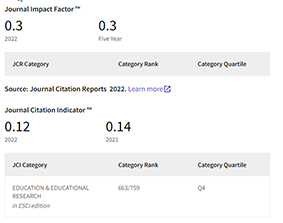Quietly Contesting the Hegemony of the Catholic Clergy in Secondary Schooling in Ireland: The Case of the Catholic Lay Secondary Schools from Independence in 1922 to the early 1970s
DOI:
https://doi.org/10.14516/ete.336Parole chiave:
Secondary schooling, Ireland, Catholic Church, lay peopleAbstract
From the time of Irish independence in 1922 until the mid-1960s, a cohort of small, lay-run Catholic secondary schools operated in Ireland. They functioned to fill a gap that had existed in the network of Catholic clergy- and religious order-run secondary schools and catered for the minority of the population attending the majority of the secondary schools in the country. The (Catholic) Church authorities, who monopolised secondary school education and resented the intrusion of other parties into what they considered to be their sacred domain in this regard, only tolerated the establishment of lay-run schools in districts where it was not anxious to provide schools itself. This indicated the preference of the Church for educating the better-off in Irish society as the districts in question were mostly very deprived economically. The paper details the origins, growth and development of the lay-owned Catholic secondary schools. The attitude of the Church to their existence is then considered. The third part of the paper focuses on a particular set of lay schools established amongst what had been, for a long time, one of the most neglected areas in Ireland in terms of secondary school provision by the Catholic Church, namely, the Irish-speaking districts in the remote and impoverished areas in the north-west, west, south-west and south of the country, which were officially called the Gaeltacht districts.
Riferimenti bibliografici
Department of Education (1960). Report of the Department of Education for the school year 1959-60. Dublin: Department of Education.
Department of Education (1998). Report of the Department of Education for the school year 1997-98. Dublin: Department of Education.
Fahey, T. (1994). Catholicism and industrial society in Ireland. In Goldthorpe, J. H., & Whelan, C. T. The development of industrial society in Ireland (pp. 241-263). Oxford: Oxford University Press.
Kelly, J., & Hegarty, S. (2016). Introduction: Writing the history of Irish education. In Kelly, J., & Hegarty, S. (Eds.), Schools and schooling, 1650–2000: New perspectives on the history of education. The eighth Seamus Heaney lectures (pp. 13-33). Dublin: Four Court Press.
Ó Cearbhail, S. (1989). B’aoibhinn a bheith beo. Baile Átha Cliath: Coiscéim.
Ó’Conor, S. (1986). A troubled sky: Reflections on the Irish educational scene. Dublin: Educational Research Centre, St. Patrick’s College, Dublin.
Ó Gadhra, N. (1986). Bóithrín na smaointe. In Scoil Mhuire. Iris Chomórtha, Scoil Mhuire, Dromcolliher 1936-1986 (pp. 37-39). Dromcolliher, Co. Limerick: Scoil Mhuire.
O’Donoghue, T., & Harford, J. (2011). Church-State relations in Irish education’, Comparative Education Review, 55(3), 316-341.
O’Malley, J. (2004). An account of the growth of the lay Schools in Ireland, 1922-1970, the motives of the lay founders, the demise of the lay schools, and the impact of lay education during that period. Paper presented at the History of Education Society Conference, Trinity College Dublin, Dublin.
O’Malley, J. (2011). The Catholic lay secondary schools of rural Ireland, 1922-75. (Unpublished PhD. Thesis). National University of Ireland, Cork.
Titley, B. (1983). Church, state, and the control of schooling in Ireland, 1900-1944. Montreal & Kingston: McGill-Queen’s University Press.
Uí Chatháin, M. Bean (1986). Aiste. In Scoil Mhuire. Iris Chomórtha, Scoil Mhuire, Dromcolliher 1936-1986 (p. 17-19). Dromcollogher, Co. Limerick: Scoil Mhuire.
Waldron, K. (2002). Out of the shadows: Emerging secondary schools in the Archdio-cese of Tuam. Tuam, Co. Galway: Barnaderg.







